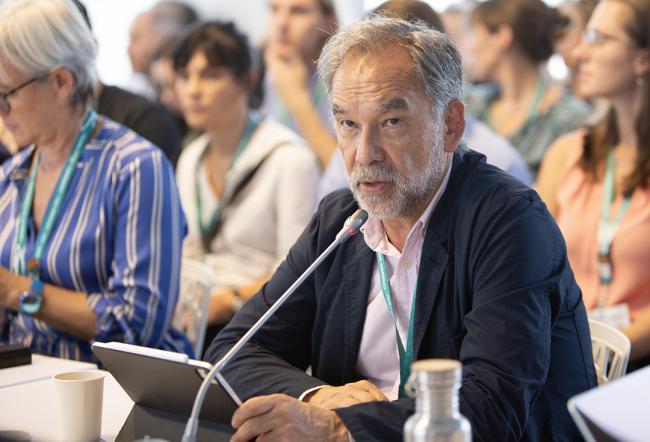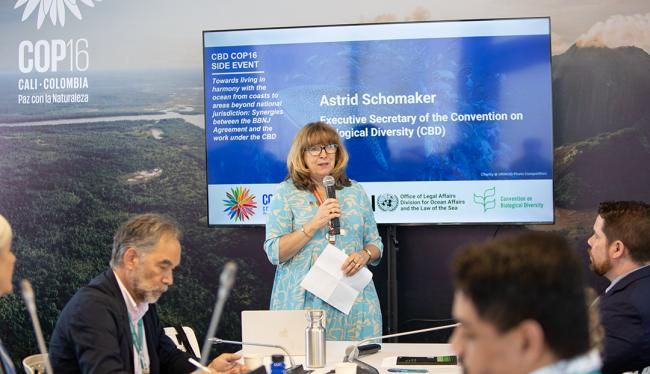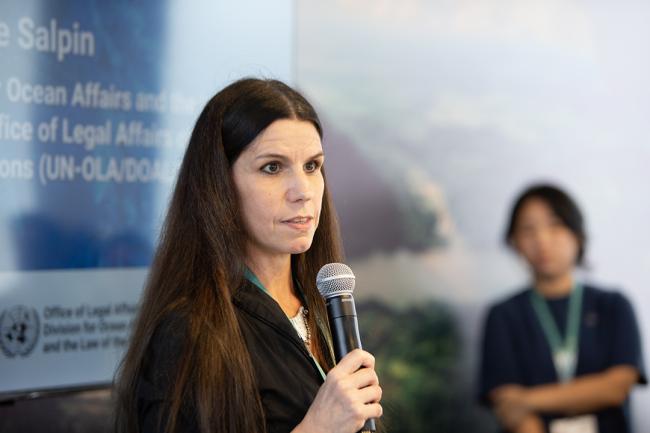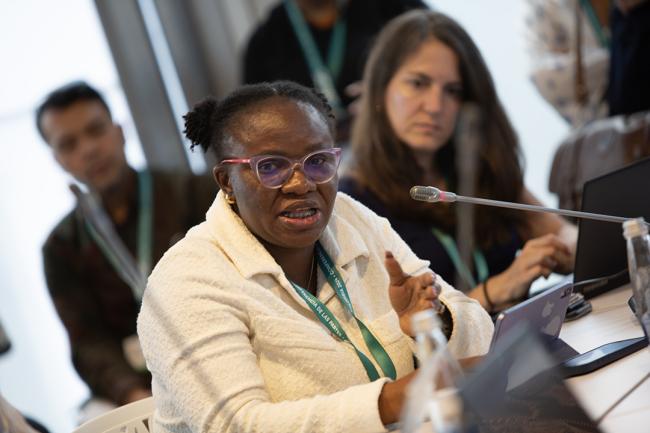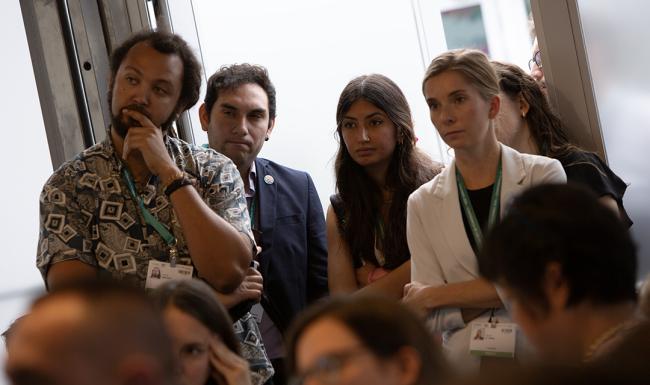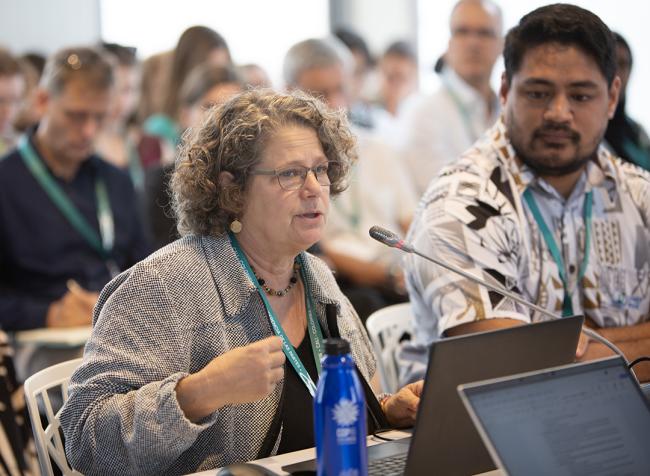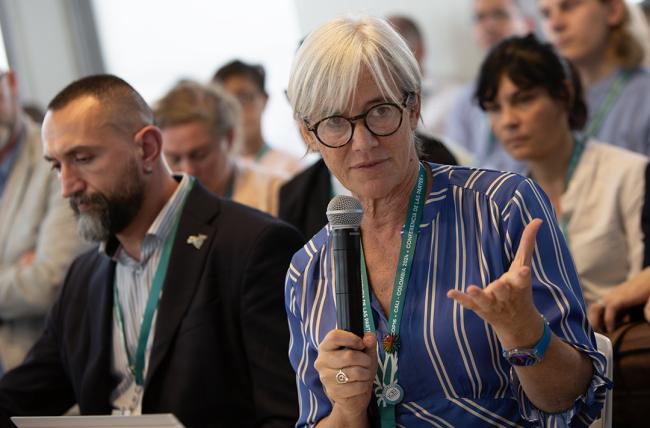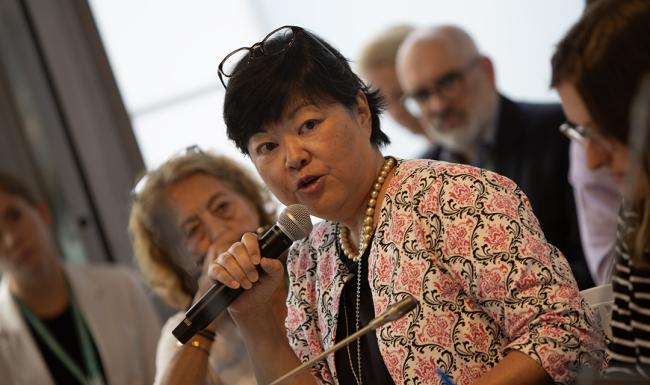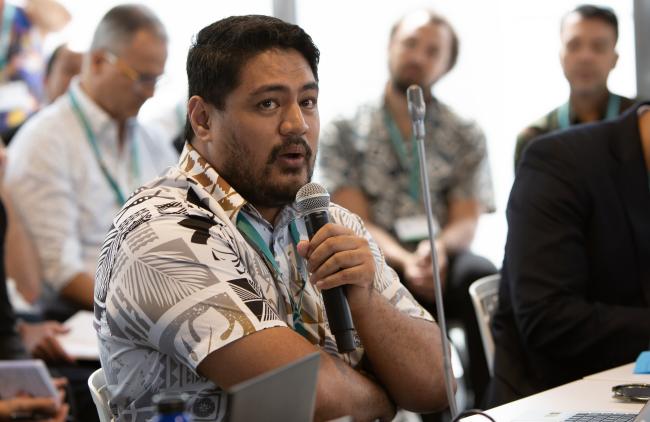About
The adoption in June 2023 of the Biodiversity Beyond National Jurisdiction (BBNJ) Agreement signified a change in tides, not only for ocean governance in areas beyond national jurisdiction, but also for biodiversity conservation. With the expectation that the implementation of the Kunming-Montreal Global Biodiversity Framework (GBF) and ratification of the BBNJ Agreement will soon come into fruition, stakeholders are becoming increasingly aware of the possible opportunities and challenges that it may bring. This side event considered how the BBNJ Agreement can work in synergy with efforts undertaken by the Convention on Biological Diversity (CBD), including the GBF.
Mauricio Cabrera, Ministry of Environment and Sustainable Development, Colombia, opened the event, underscoring Colombia’s commitment to protection of the Ocean and achievement of Sustainable Development Goal 14 (life below water)—not just within their national borders, but also beyond.
Astrid Schomaker, Executive Secretary, CBD, welcomed the attendees, noting that the synergies—particularly those between the GBF and BBNJ Agreement—are needed for greater efficiencies in the implementation of common goals. She outlined some of the work being developed under the CBD, including those on digital sequence information on genetic resources, that have clear linkages to implementation of the BBNJ Agreement.
Linkages and Complementarities Between the BBNJ Agreement and the GBF
Charlotte Salpin, UN Division for Ocean Affairs and the Law of the Sea (DOALOS), moderated the panel, noting that the two frameworks contribute to achieving global goals and targets for the Ocean, and highlighting the various opportunities for cooperation and coordination.
Fariz Ahmadov, Fisheries and Oceans Canada, said the negotiations of the BBNJ Agreement and the GBF overlapped, and that synergies have been present from the beginning. He said the BBNJ Agreement is integral to implementation of the GBF, and that capacity needs under both cannot be separated. He encouraged the involvement of more regional conventions for their contribution to strengthening both the CBD and the BBNJ Agreement.
Sharing a regional perspective, Sikeade Egbuwalo, Federal Ministry of Environment, Nigeria, echoed the observation that regional cooperation is crucial for implementation of both the GBF and BBNJ Agreement. She offered GBF Target 3 (30x30) as an example, noting it would require regional efforts for the designation and protection of marine protected areas in the high seas.
Leveraging the Cooperation and Synergies between the BBNJ Agreement and the CBD, including the GBF: Opportunities and Challenges
Joseph Appiott, CBD Secretariat, introduced the panel, and invited panelists to share challenges in leveraging cooperation and synergies between the BBNJ Agreement and CBD, including the GBF, and to explore how these can be effectively addressed.
Amy Fraenkel, Executive Secretary, Convention on the Conservation of Migratory Species of Wild Animals (CMS), stated synergies should extend beyond the CBD and BBNJ Agreement, and that other frameworks, such as the CMS, also have roles to play in their effective implementation. She urged working past looking at different mandates and instead working together constructively for common and aligned goals.
Vera Agostini, Deputy Director of the Fisheries and Aquaculture Division, Food and Agriculture Organization of the UN (FAO), noted that both the GBF and BBNJ Agreement require a whole-of-society approach. She highlighted common information needs in fisheries as a possible opportunity for cooperation between the two frameworks. She also focused on the role that FAO can play in “translating” the language of the GBF and BBNJ Agreement for the fisheries sector in a relatable manner, so this sector can also feel welcome in this whole-of-society approach.
Chizuru Aoki, Global Environment Facility (GEF), noted that USD 34 million has been authorized for early ratification of the BBNJ Agreement, and that countries are encouraged to reach out to the GEF for ratification and implementation support. She noted that finance can be an integrator, facilitator, and catalyst for cross-cutting elements for the CBD and BBNJ Agreement.
Everett Sioa, Secretariat of the Pacific Regional Environment Programme, stated that coordinated regional efforts are vital because marine ecosystems are connected, and thus transboundary linkages extend beyond national jurisdiction.
Marie-Morgane Router, Global Youth Biodiversity Network, said while youth has been recognized under the CBD, the BBNJ Agreement has not explicitly done so. She argued that youth can bridge these two frameworks on the ground, underscoring the urgency of meaningful participation of youth.
The event closed with a video message from Adam McCarthy, Co-Chair, BBNJ Agreement Preparatory Commission, who stated that the BBNJ Agreement has much to learn from the CBD to help ensure that the BBNJ COP will hit the ground running.
Organizers: UN Office of Legal Affairs/DOALOS and the CBD Secretariat
Contact:
Joseph Appiott, CBD Secretariat joseph.appiott@un.org
Charlotte Salpin, DOALOS salpin@un.org
Bingzhuo Li, DOALOS bingzhuo.li@un.org
For more information: https://www.cbd.int/side-events/5838
To receive free coverage of global environmental events delivered to your inbox, subscribe to the ENB Update newsletter.
All ENB photos are free to use with attribution. Towards living in harmony with the ocean from coasts to areas beyond national jurisdiction: Synergies between the BBNJ Agreement and the work under the CBD, please use: Photo by IISD/ENB | Angeles Estrada Vigil

